People
After His Art Dealings Got Him in Hot Water, Collector Michael Xufu Huang Is Staging His Comeback, Starting With a Major Upgrade to His X Museum in Beijing
In an exclusive interview, Huang talks about his desire to 'form the new norm.'
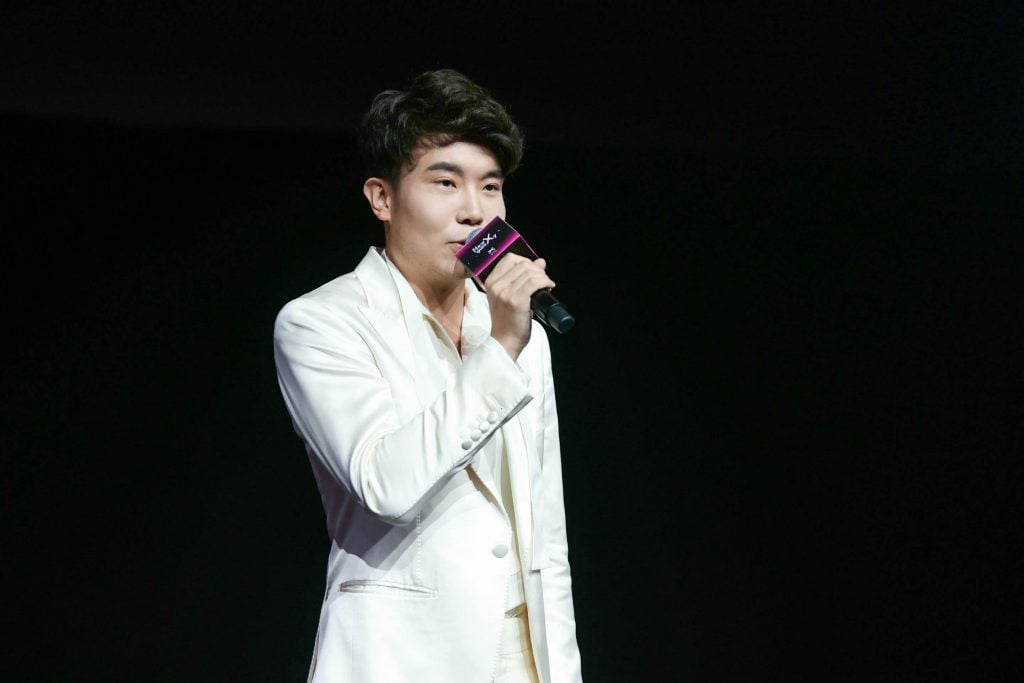
In an exclusive interview, Huang talks about his desire to 'form the new norm.'

Cathy Fan

Three years after its founding in May 2020, Michael Xufu Huang’s X Museum in Beijing underwent a complete upgrade and relocated to a new venue designed by Studio NOR in Langyuan Station, a former textile factory near the 798 Art District. On the evening of May 27, amid a glitzy galaxy-themed dinner accompanied by a charity auction in collaboration with Phillips, the new X Museum celebrated its official opening.
If you are an enthusiast of the ultra-contemporary generation, you will undoubtedly recognize these artists from its opening exhibition: Jes Fan, Christina Quarles, Loie Hollowell, Nicolas Party, and more. The show features 49 artworks (selected from the museum’s 1,500-pieces-plus collection), all revolving around the themes of pink and the “post-pandemic epoch.” Huang told Artnet News that the concept behind the exhibition, “101,” reflects his idea of “providing visitors with an introductory experience to contemporary art,” akin to an entry-level college course.
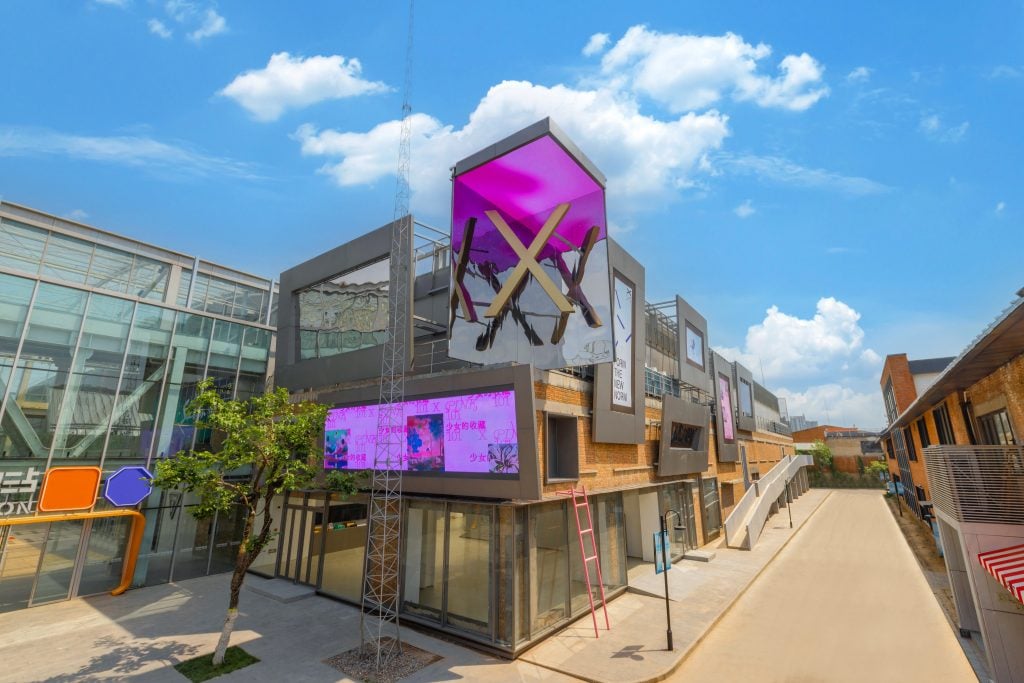
The facade of the new X Museum in Beijing’s 798 Art District. Courtesy of X Museum.
As a patron and collector since the age of 16, Huang has been a media magnet due to his various involvements in art: his early start, his swanky lifestyle and social visibility, the establishment of the museum, his connection to the Netflix series Inventing Anna and the story behind it—and most recently, his collecting activities. In early 2022, a lawsuit filed by Huang exposed the messy flip of a Cecily Brown painting Huang had acquired, pushing him into the baking-hot limelight. The saga, which prompted two dealers to cancel sales to Huang, concluded with a settlement and an apology post on his Instagram account.
The morning after the opening party, we tagged along with Huang to explore the museum in daylight. The two-story building, originally a sprawling textile warehouse, now provides an expansive exhibition space of approximately 3,000 square meters, a substantial upgrade from its previous location. Abundant natural light shines through from the roof, illuminating the glossy gray walls, which provide a futuristic sense. The museum’s toilets are gender-neutral—a rarity in China, especially in public institutions. The entrance wall showcases the “Board of Trustees,” referred to as the “X-Men,” while the Young Patron Circle is dubbed the “X Citizens.”
Huang sat in his office and spoke with Artnet News on his operation and the ideal shape of X Museum, the Brown incident, and a bit of his personal goals beyond the realm of art.
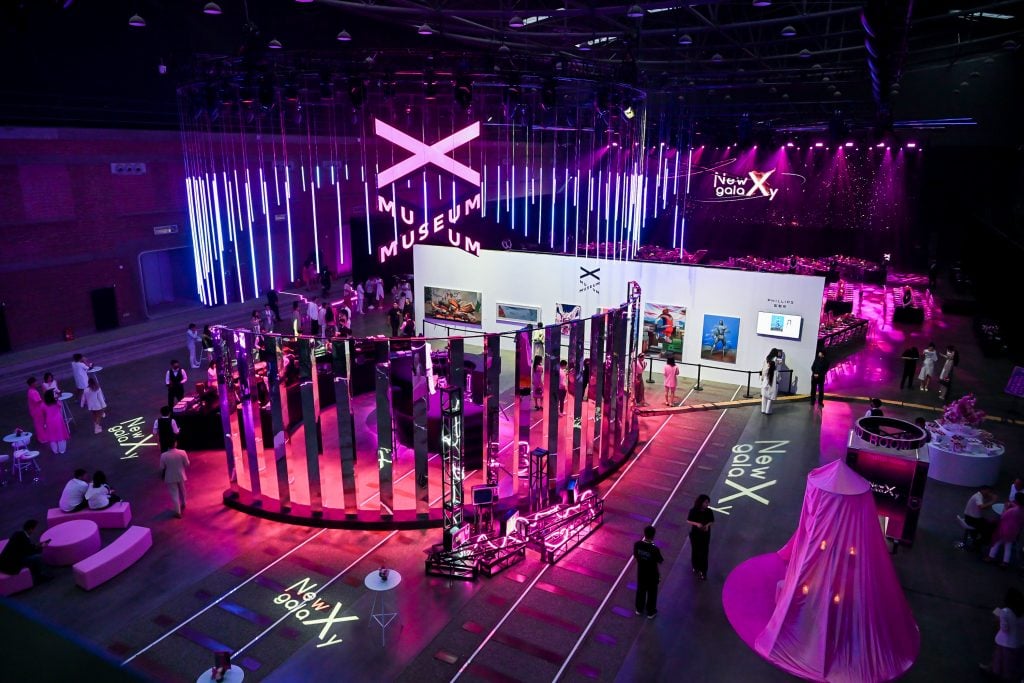
“The News GalaXy” gala at X Museum, May 27, 2023. Courtesy of X Museum.
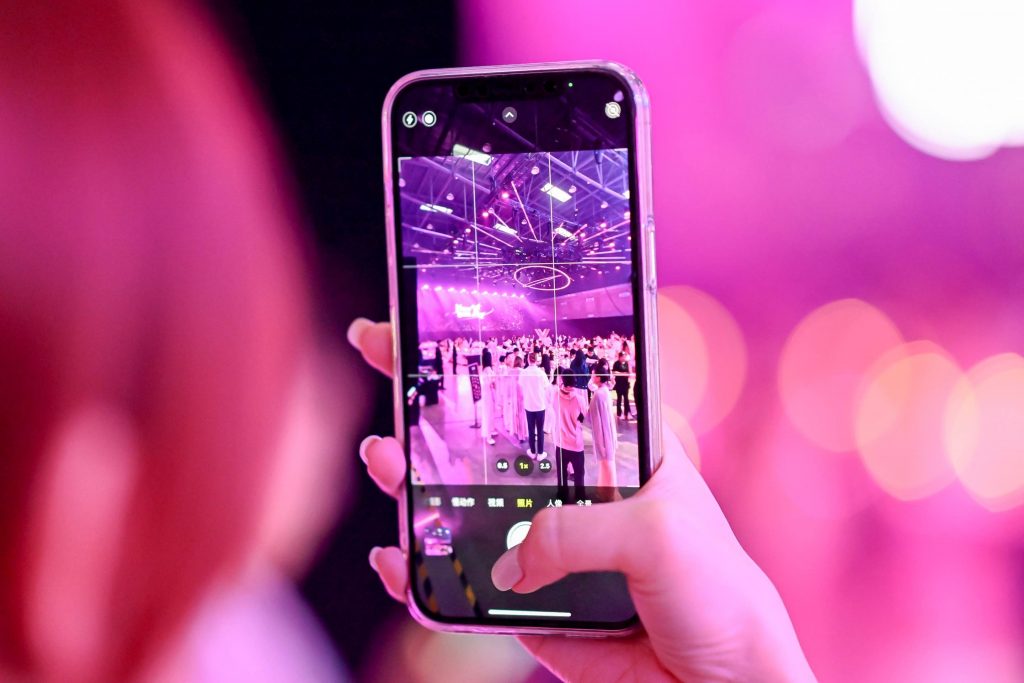
“The News GalaXy” gala at X Museum, May 27, 2023. Courtesy of X Museum.
I’m curious about how X Museum managed to relocate in such a short time frame. Can you tell us how it came about?
This move is an upgrade in many ways. The previous architectural structure posed a curatorial challenge, and it was located further away from the city center. Those three years were a fast process of building awareness for the museum and accumulating experience and learning. I think it is more important to make changes rather than to dwell on the sunk costs of the past. Now it’s the right time to do so.
It is also three years into the pandemic since the opening of the museum. What have been the biggest challenges?
The travel restriction posed the biggest challenge for us. From the beginning, our programs have been internationally oriented. One of our visions was to provide a platform that brings Chinese artistic talent to the international audience. Many of our exhibitions are the first solo shows for internationally acclaimed ultra-contemporary artists in China or Asia. We had to think strategically about what we could do to bring in domestic audiences and reach international audiences in alternative ways.
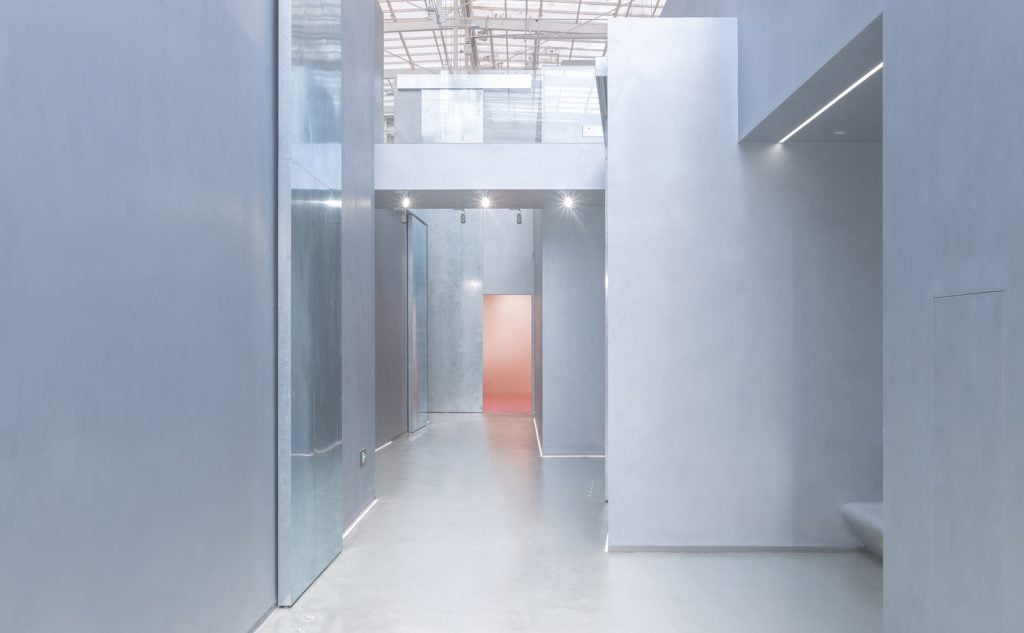
Interior of X Museum. Courtesy of X Museum.
You seem to do a lot of projects outside of the regular museum programs, like sponsoring the tennis player Wu Yibing or launching X Virtual, which commissioned works from 15 artists and reached an online viewership of 20,000. Can you tell us more about why you like these unconventional methods of operating a museum?
I’m a person who likes to try new things, so I’m not too limited to a traditional museum operation. In the past two years, many museums were unable to operate normally due to the pandemic, which allowed me more time to think about how to innovate. So we did the Lulu by X Museum residency in Mexico City, in partnership with Chris Sharp. And we launched X Virtual, an international project that invites digital artists to create in the virtual world, including an incubator program. In addition, we are speaking to a young audience by creating engaging programs and crossovers to other cultural fields both online and offline. The way they consume information, art, and culture is different from the last generation; this also encouraged us to think creatively what’s the most effective way to bring a larger audience to our program. We did a lot of public-education programs and creative experimentation, such as “Art Takeaway,” in which we showcased Tong Kunniao’s work by placing it inside a van and driving it around in the city center of Beijing. This approach allowed us to bring a miniature museum exhibition directly to the audiences, flipping the traditional dynamic and making art more accessible.

Installation view, “X PINK 101,” X Museum’s re-opening exhibition. Courtesy of X Museum.
You are no longer the director of the museum this time. Why is that?
I wanted to be able to run and develop the museum better by focusing on my own strengths and specialty, which are content and strategic development. I need someone else who doesn’t necessarily have a curatorial or artistic background for the position of director, and who can focus on execution, operation, and event organization.
Do you have any role models or favorite institutions in the field of art museums?
I really like the New Museum model; the division of work and responsibilities between [director] Lisa Phillips and [artistic director] Massimiliano Gioni works well. As artistic director he can make the project work exceptionally well, and then Lisa can do the development and the big strategy. I don’t want to make X a grand museum like the Met or MoMA, but rather a museum with experimental and cutting-edge programs and its own vibe.
What would be the ideal vibe of your museum, then?
I like to be challenged. If something feels familiar to me, it doesn’t excite me. I get a sense of excitement when I discover and experience the new, such as discovering new artists and works. The ethos of our museum is “form the new norm.” This makes people think that we have good taste, that they could discover new things and feel inspired. From naming our museum to launching our mascot, we think about how to do things differently from others. I hope when people come to the museum, they can feel the brand image and position through our architecture, exhibitions, and even though the composition of our board and patrons. We want to maintain a certain character and also coherence.
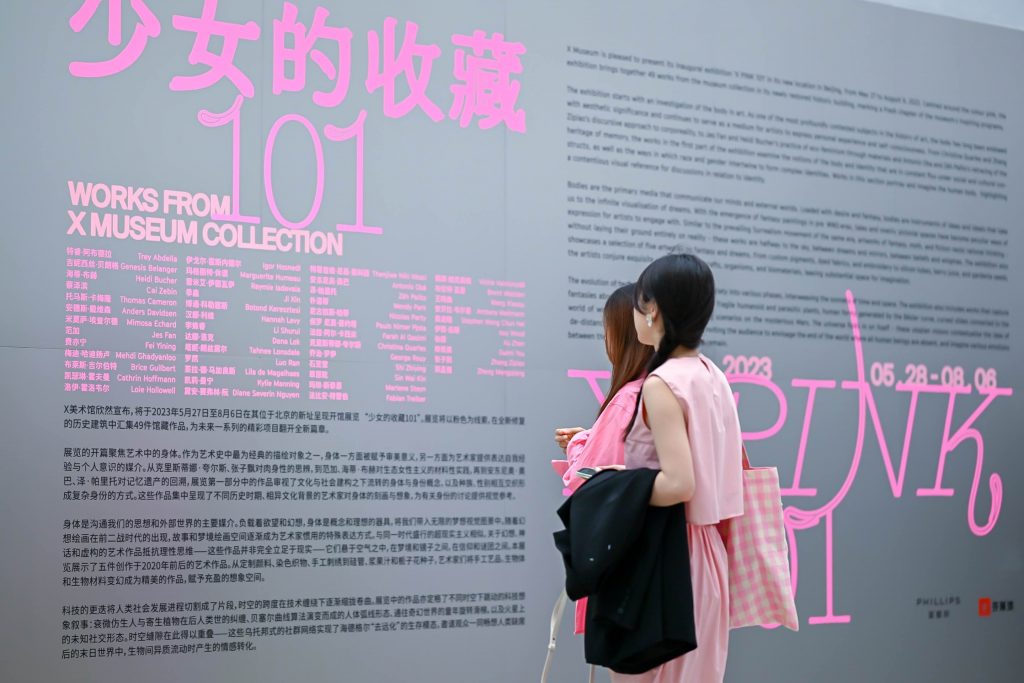
Visitors at “X PINK 101,” X Museum’s re-opening exhibition. Courtesy of X Museum.
How do you envision the future of X Museum? What kind of institution do you anticipate it becoming?
I hope it represents the zeitgeist. From the beginning, X Museum has supported many contemporary artists from home and abroad. I hope that after a while, people can see that we are a visionary and forward-thinking institution that has done many projects that are important for the present. We have a unique collection in which we keep the very best works of leading ultra-contemporary artists in this era in China. We also launched X Virtual, a platform for artists to create in the digital realm, and people consider us the first non-profit platform for digital art in China.
Has your perception of art museums changed over the years from your initial involvement in them until now, considering the evolving reality?
To be honest, I thought that at that time, art museums could be self-sustaining. But later on, I felt that in reality, art museums are best as a nonprofit model. We can’t succeed in making a profit, so it is more important for us to build a good platform, to continue to “self-sustain and self-restore,” and to build a good structure.

Visitors take in “X PINK 101,” X Museum’s re-opening exhibition. Courtesy of X Museum.
Let’s now talk about the Cecily Brown deal, which you caught a lot of flak for at the time. Do you feel it was justified? What is your response and attitude to this now?
I think the gallery and the artist were the ones who got hurt the most in this incident.
I don’t think it’s necessary to complain about other people. There’s my part of the mistake in it. I think when I was younger, I didn’t know how to draw boundaries with other people; in the end, I realized that I can’t trust everyone. I know more clearly that I need to be more disciplined in terms of professional conduct, and other activities in life, too.
I grew up as a perfectionist, having this “fault” knocked the shell off and took a lot of pressure off me. Everyone has flaws, everyone can make mistakes, no matter if it’s in your career, or in your relationships—no one is always correct. People are more malleable when they are young, but we have time and can create opportunities to correct mistakes, that’s part of life. Now I can say that I appreciate everything that happened. It was a lesson learned that helped me become a better person.
After this saga, some galleries said they won’t sell to Chinese collectors. How do you respond?
I think galleries have the right to decide what they do. But I personally think that magnifying one incident and making generalizations about a larger group isn’t the best thing to do to develop one’s own artists’ careers or programs. It’s not a mature and forward-thinking business practice or strategy, either.
How do you respond to the comments that you have been constantly buying works for others and that you yourself are a dealer? What do you say to that?
We have 1,500 pieces in our collection, and we sold fewer than 10 during the pandemic. In the past, there were a few cases in which I had friends who wanted particular pieces and I could help them buy them. But I don’t see it as dealer behavior, more like doing them a favor.
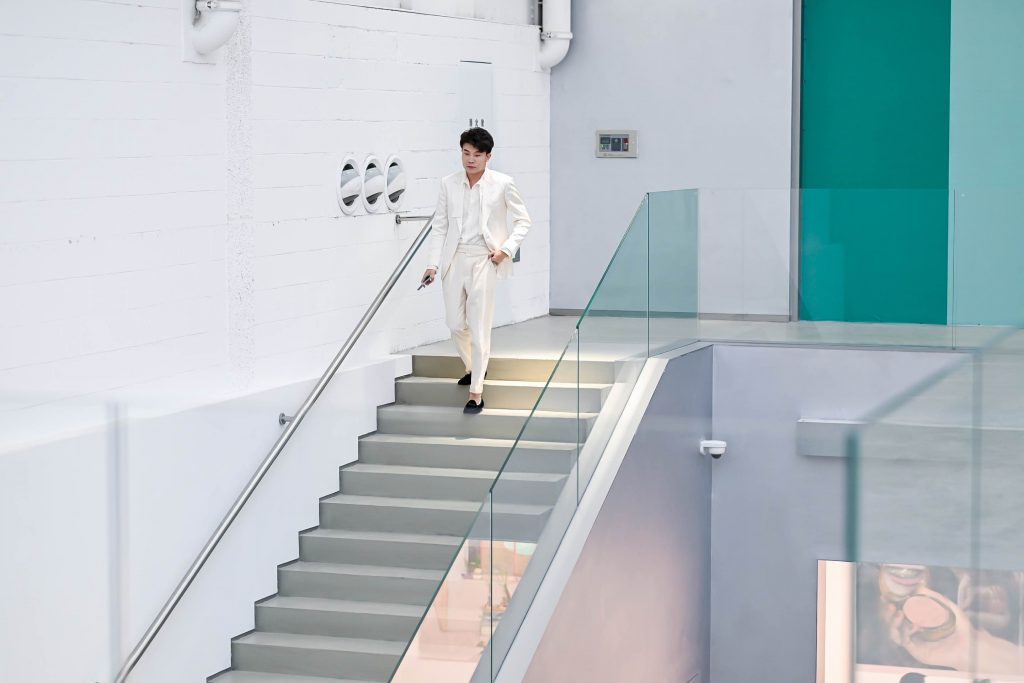
Michael Xufu Huang, founder and former director of X Museum. Courtesy of X Museum.
What was your perception of the numerous negative comments that emerged from the news during that period?
When it happened, people who reached out to me were encouraging. Many of my international gallery friends told me that a lot of artists said I supported their careers and that it wouldn’t change anyone’s opinion of me. There were one or two galleries that canceled their sales to me. It’s understandable, but it’s also ironic that these galleries are the ones that every time I buy something, tell other collectors that Michael collected the artist’s work, to convince them to buy it.
Of course, I heard a lot of different voices. At first, I was not so strong mentally; I felt that I was hated by many people. Later I realized that no matter the gossip, it is because I have made certain achievements to be seen, so I think this is also what I have to bear.
You once mentioned your personal goals outside of art. Can you elaborate?
I definitely want to take a break now, because before the opening I was in a very fast-forward mode. I also like the venture capital industry, and I discover new companies as I do with artists. I also like watches. So, the next thing to think about is what are the ways to create a system that combines all my points of interest in my career, not just the artistic side.